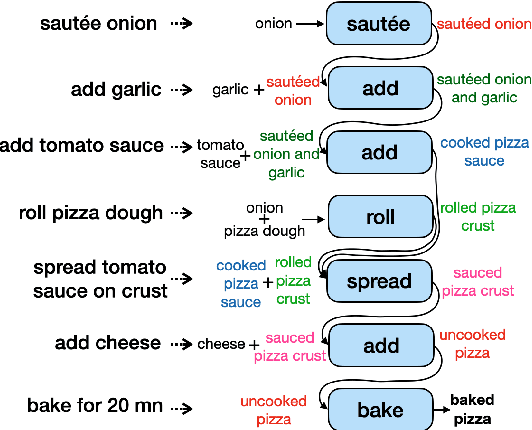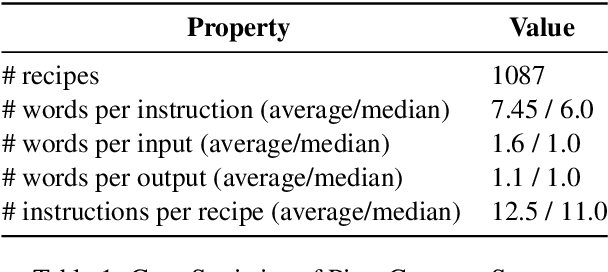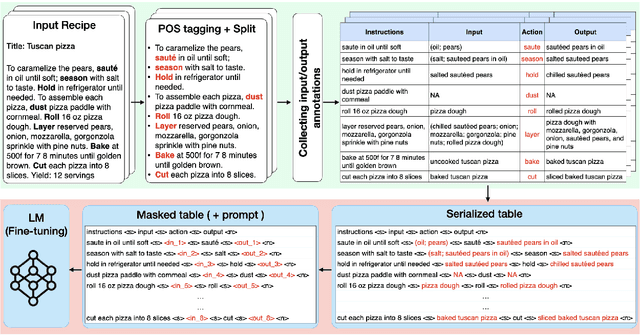PizzaCommonSense: Learning to Model Commonsense Reasoning about Intermediate Steps in Cooking Recipes
Paper and Code
Jan 12, 2024



Decoding the core of procedural texts, exemplified by cooking recipes, is crucial for intelligent reasoning and instruction automation. Procedural texts can be comprehensively defined as a sequential chain of steps to accomplish a task employing resources. From a cooking perspective, these instructions can be interpreted as a series of modifications to a food preparation, which initially comprises a set of ingredients. These changes involve transformations of comestible resources. For a model to effectively reason about cooking recipes, it must accurately discern and understand the inputs and outputs of intermediate steps within the recipe. Aiming to address this, we present a new corpus of cooking recipes enriched with descriptions of intermediate steps of the recipes that explicate the input and output for each step. We discuss the data collection process, investigate and provide baseline models based on T5 and GPT-3.5. This work presents a challenging task and insight into commonsense reasoning and procedural text generation.
 Add to Chrome
Add to Chrome Add to Firefox
Add to Firefox Add to Edge
Add to Edge